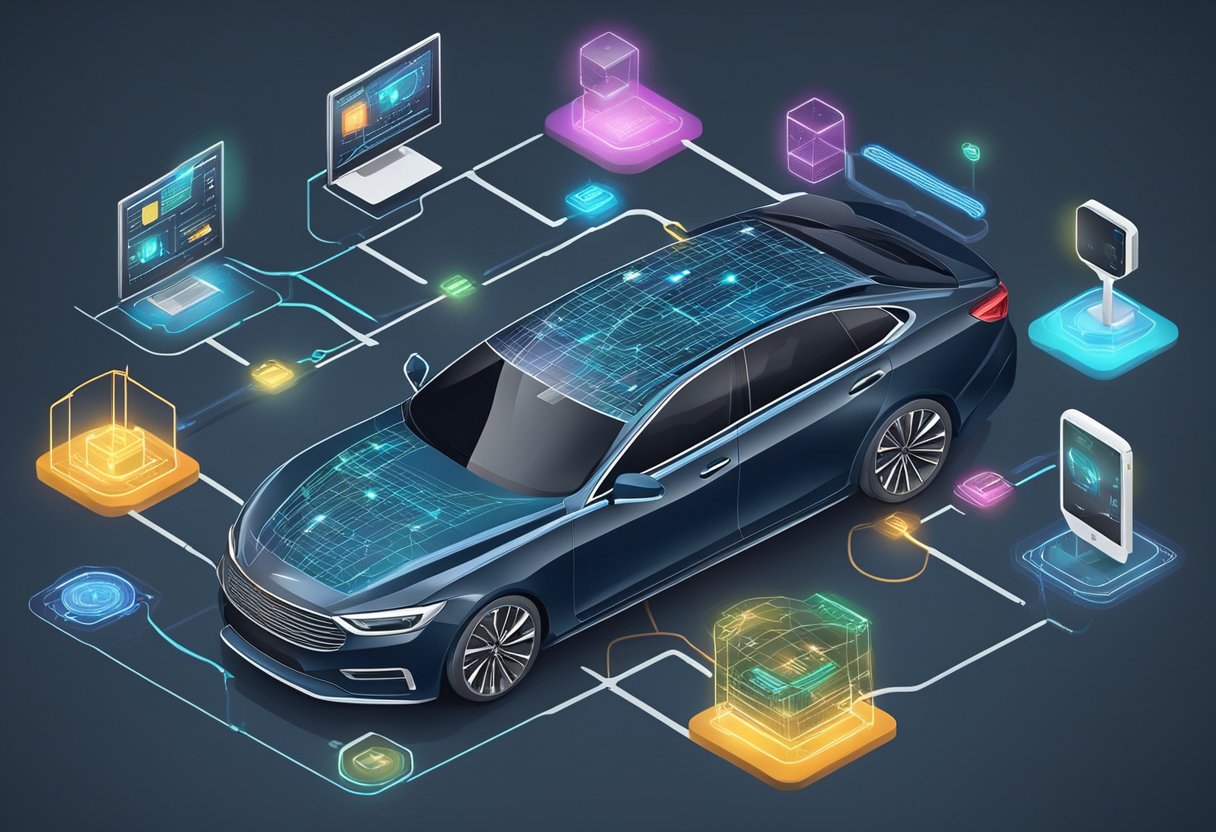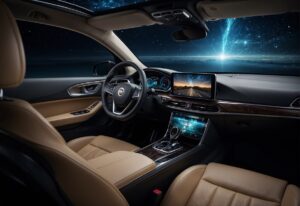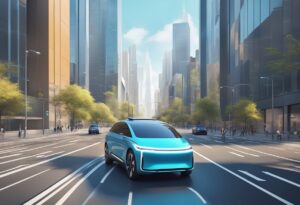IoT, or the Internet of Things, is transforming modern vehicle connectivity by enabling vehicles to become smarter and more connected than ever before.
With the integration of IoT sensors and connected devices, cars are turning into nearly autonomous machines that can communicate with outside systems. These systems include apps that can unlock your car, GPS, and vehicle-to-vehicle communication.
This technology is revolutionizing the automotive industry and enabling a transformative upgrade in the car manufacturing process.
The evolution of IoT in vehicle connectivity has led to the development of key technologies that are driving IoT in vehicles.
These technologies include sensors, cameras, and GPS trackers that are integrated into a vehicle to function as a unique structure for a better driving experience, predictive car maintenance, fleet management, and the connection of cars.
By leveraging these technologies, manufacturers can create more efficient and safer vehicles that can communicate with each other and with the infrastructure around them.
However, challenges and considerations still exist in IoT for vehicles, including cybersecurity concerns and the need for standardization across different manufacturers and models.
Despite these challenges, the future of transportation with IoT is bright, with the potential to create a safer, more efficient, and more connected transportation system that benefits both manufacturers and consumers.
Key Takeaways
- IoT is transforming modern vehicle connectivity by enabling cars to become smarter and more connected than ever before.
- Key technologies driving IoT in vehicles include sensors, cameras, and GPS trackers that can create more efficient and safer vehicles.
- While challenges and considerations still exist, the future of transportation with IoT is bright, with the potential to create a safer, more efficient, and more connected transportation system.
The Evolution of IoT in Vehicle Connectivity
The automotive industry has seen a significant transformation in recent years, with the rise of the Internet of Things (IoT) playing a significant role in this change.
IoT has revolutionized the way vehicles connect and communicate, leading to advancements in vehicle connectivity and the emergence of connected vehicles.
From Basic Telematics to Advanced IoT Platforms
In the past, basic telematics systems were used to connect vehicles, allowing for simple data transfer between the vehicle and the driver.
However, with the advent of IoT, vehicles are now equipped with advanced sensors, processors, and communication devices that enable real-time data transfer and analysis.
IoT-enabled platforms have transformed the way vehicles connect and communicate, allowing for seamless connectivity between vehicles and other devices.
IoT has enabled the development of advanced features such as predictive maintenance, remote diagnostics, and real-time traffic updates, making vehicles safer and more efficient.
The Role of IoT in Connected Car Ecosystems
IoT has played a significant role in the development of connected car ecosystems, which are designed to provide a seamless experience for drivers and passengers.
Connected car ecosystems enable vehicles to connect to other devices and services, such as smartphones, smart homes, and smart cities.
The integration of IoT in connected car ecosystems has led to the development of advanced features such as vehicle-to-vehicle (V2V) and vehicle-to-infrastructure (V2I) communication, which enable vehicles to communicate with each other and with the surrounding infrastructure.
This technology helps to improve road safety, reduce traffic congestion, and enhance the overall driving experience.
Key Technologies Driving IoT in Vehicles
The Internet of Things (IoT) is transforming the automotive industry by making vehicles faster, safer, and more comfortable.
IoT technology is a complex system of devices like sensors, cameras, and GPS trackers integrated into a vehicle to function as a unique structure for better driving experience, predictive car maintenance, fleet management, and connection of cars.
Communication Technologies: Wi-Fi, LTE, and 5G
The integration of Wi-Fi, LTE, and 5G has transformed modern vehicles into connected cars.
These technologies allow cars to communicate with outside systems, including apps that can unlock your car, GPS, and vehicle-to-vehicle communication.
The soon-to-come 5G era is expected to bring faster and more reliable connectivity to cars, enabling new applications such as remote software updates, real-time traffic information, and enhanced safety features.
The Impact of AI and Machine Learning
AI and machine learning are playing a significant role in the development of IoT in vehicles.
These technologies enable cars to learn from their surroundings, making them more intelligent and capable of making decisions on their own.
AI and machine learning algorithms can help cars detect and avoid obstacles, predict maintenance issues, and optimize fuel efficiency.
Hardware Innovations: Sensors and Electronic Control Units
Hardware innovations such as sensors and electronic control units (ECUs) are critical components of IoT in vehicles.
Sensors are used to collect data from the environment, such as temperature, pressure, and humidity, and transmit it to the car’s ECUs for processing.
ECUs are responsible for controlling various systems in the car, such as the engine, brakes, and steering.
IoT technology is enabling the integration of these components, making cars more intelligent and efficient.
Enhancing the Driving Experience
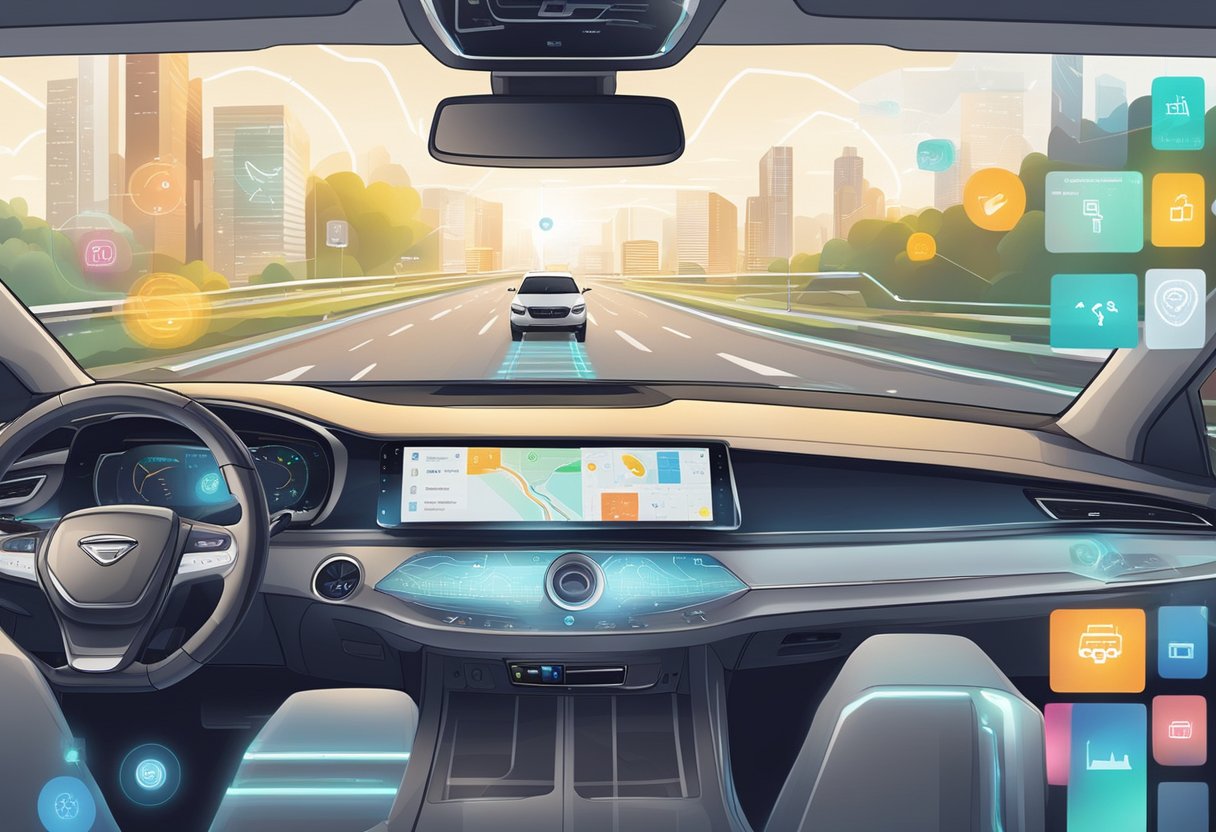
Modern vehicles are now equipped with a range of IoT technologies that are transforming the driving experience. These technologies are making modern cars faster, safer, and more comfortable. Here are some of the ways IoT is enhancing the driving experience.
Infotainment Systems and Connectivity
Infotainment systems are becoming a standard feature in modern vehicles.
These systems provide drivers with a range of features such as navigation assistance, media playback, and climate control.
With the help of IoT, these systems are becoming more advanced and connected.
For example, some vehicles now come with voice-activated infotainment systems that allow drivers to control their vehicle’s features without taking their hands off the wheel.
These systems are also becoming more connected, allowing drivers to access their favorite apps and services directly from their vehicle’s dashboard.
Advanced Driver Assistance Systems (ADAS)
ADAS is a set of technologies that are designed to make driving safer and more convenient.
These systems use a range of sensors and cameras to detect hazards and assist drivers in making safe driving decisions.
For example, some vehicles now come with lane departure warning systems that alert drivers when they are drifting out of their lane.
Other ADAS features include automatic emergency braking, blind-spot detection, and adaptive cruise control.
With the help of IoT, these systems are becoming more advanced and connected, allowing them to provide drivers with even more assistance and safety features.
Predictive Maintenance and Vehicle Health Monitoring
IoT is also transforming the way vehicles are maintained and serviced.
With the help of IoT sensors and data analytics, vehicles can now be monitored in real-time for potential issues.
This allows for predictive maintenance, where issues can be identified and resolved before they become major problems.
For example, IoT sensors can monitor a vehicle’s tire pressure, engine condition, and battery health, providing drivers with real-time feedback on their vehicle’s performance.
This not only enhances the driving experience but also helps to prolong the life of the vehicle.
Challenges and Considerations in IoT for Vehicles

The integration of IoT technology in modern vehicles has brought about a significant transformation in the automotive industry. However, with these advancements come challenges and considerations that need to be addressed to ensure the safety and security of drivers and passengers. Here are some of the challenges and considerations in IoT for vehicles.
Cybersecurity Risks and Data Privacy
One of the most significant concerns with IoT in vehicles is cybersecurity risks and data privacy.
With the increasing number of connected devices and sensors, vehicles are vulnerable to hacking and cyber-attacks.
This can lead to the theft of personal data, vehicle control, and even accidents.
Therefore, it is essential to ensure that adequate security measures are put in place to protect the data and systems of connected vehicles.
Addressing the Complexity of IoT Integration
Another challenge in IoT for vehicles is addressing the complexity of integration.
The integration of IoT technology in modern vehicles involves the integration of various systems and devices from different manufacturers.
This can lead to compatibility issues, which can result in system failures, reduced performance, and safety concerns.
Therefore, it is essential to ensure that all systems and devices are compatible and work seamlessly together.
Regulatory and Standardization Issues
Regulatory and standardization issues are also a significant challenge in IoT for vehicles.
With the rapid development of IoT technology, there is a need for clear and comprehensive regulations and standards to ensure the safety and security of drivers and passengers.
Additionally, the lack of standardization can lead to compatibility issues, which can result in system failures and reduced performance.
The Future of Transportation with IoT
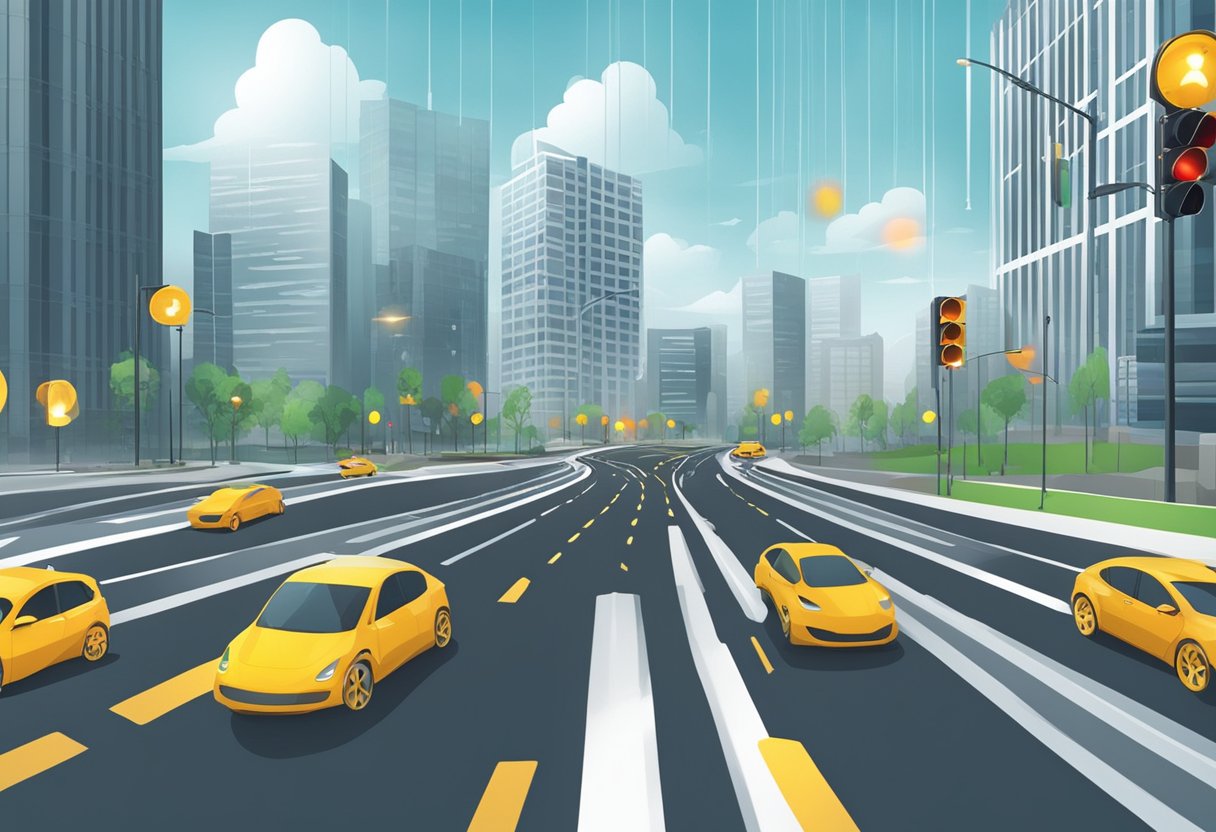
The Internet of Things (IoT) has revolutionized the transportation industry, with its ability to connect various devices and systems. As the world moves towards a more connected future, IoT is set to play a major role in shaping the future of transportation.
Autonomous and Self-Driving Cars
Autonomous vehicles are the future of transportation, and IoT is playing a crucial role in making this a reality.
The use of sensors and cameras in autonomous vehicles allows them to communicate with other vehicles and infrastructure, making them safer and more efficient.
Vehicle-to-vehicle (V2V) communication is a key feature of autonomous vehicles, which allows them to share information about their surroundings, such as traffic, road conditions, and weather.
IoT technology is also being used to develop self-driving cars, which will further reduce the need for human intervention in transportation.
Smart Cities and Intelligent Transportation Systems
The concept of smart cities is gaining traction, with IoT being a key enabler.
IoT technology is being used to develop intelligent transportation systems that can optimize traffic flow, reduce congestion, and improve safety.
These systems use real-time data from various sensors and cameras to provide accurate information about traffic conditions, which can be used to make informed decisions about traffic management.
Additionally, IoT technology is being used to develop smart parking systems, which can help drivers find parking spots quickly and easily.
The Role of IoT in Sustainable and Efficient Transportation
IoT is also playing a key role in developing sustainable and efficient transportation systems.
The use of electric vehicles is on the rise, and IoT is being used to develop charging infrastructure that can be easily accessed by drivers.
IoT technology is also being used to optimize the use of public transportation systems, making them more efficient and reducing the need for personal vehicles.
This will not only reduce traffic congestion but also help reduce greenhouse gas emissions.

